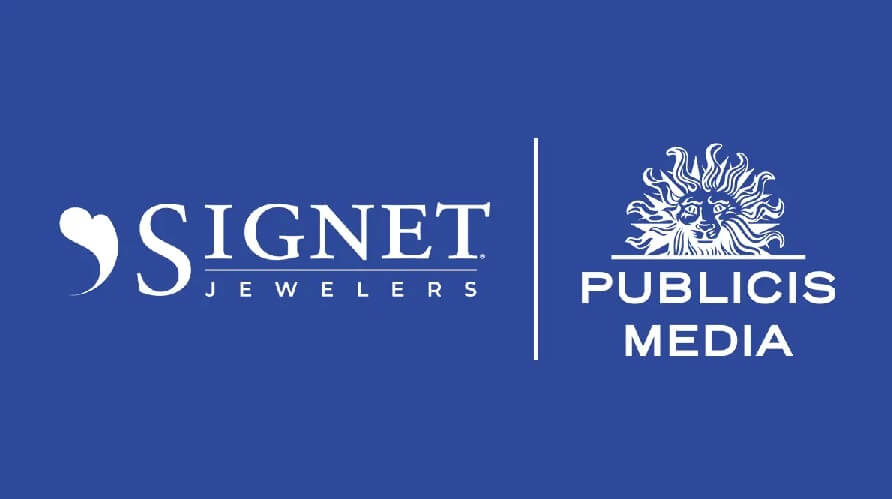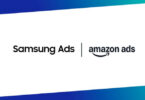Coppell-based Signet Jewelers awarded its U.S. media business to Publicis Media following a brand-led review that kicked off in January.
As a result of this outcome, the brand will end its relationship with EssenceMediacom, the largest of WPP’s GroupM agencies. While Spark Foundry led the review on behalf of Publicis Media, it presented Signet marketing leaders with its Power of One solution, in which the holding company facilitates cross-agency collaboration to service its clients.
“I think of them all as Publicis, and that’s really part of the value for us,” Signet CMO Tony Rogers told Adweek. “That’s why we took the holding company approach … we like to have one person that we can call that’s overseeing the whole operation.”
Despite Publicis’ success displaying its cross-agency service model, Signet brand leaders ran a flexible process. They asked holding companies to select the best offerings from within their portfolio. Whether “the best offering” was a group-level or individual agency solution, was up to the holding companies to decide. The pitch required each contender to share their offering, and also to respond to a case study on Signet’s Zales brand.
“I’d say the consistency was [that] each of them brought really strong teams to bear. One of them actually brought together a patchwork of several different agencies within the holding company to pitch together, so the approach varied,” Rogers added.
Inside the review
Signet’s relationship with the incumbent, WPP, goes back to 2019, when MediaCom won the business from Omnicom Media Group and Publicis’ Digitas. MediaCom merged with its GroupM sister agency Essence to form EssenceMediacom in January.
The incumbent defended the business, according to sources familiar with the review, who also confirmed IPG and Omnicom’s GSD&M participated in the pitch. Omnicom declined to comment for this story, except to confirm GSD&M still handles creative for Signet’s Zales brand. A spokesperson for EssenceMediacom also declined Adweek’s request for comment, and an IPG spokesperson did not respond to Adweek by the time of this story’s publication.
Although MediaCom assumed AOR duties, the jewelry company partners with several agencies across its brand portfolio. For example, following the 2019 review, the creative agency McKinney retained its relationship with Signet’s Jared brand. Meanwhile, Zimmerman took on creative and strategy work for the Kay brand, and Badger & Winters became Zales’ agency of record. The most recent review was not a total consolidation, leaving room for other non-media agencies on the brand’s roster.
The media review kicked off in January, amidst Essence and Mediacom’s merger, though Rogers stressed to Adweek that this consolidation did not catalyze the review. Instead, the brand’s new marketing transformation strategy triggered his desire to explore different service offerings.
The brand spent $250 million on U.S. media in 2022, with digital media spend accounting for $125 million of that total, according to COMvergence estimates. A source close to the review believes the actual number is higher.
The account size makes Signet one of the largest account changes this year, and marks another significant loss for WPP’s GroupM, which recently lost billion-dollar account L’Oréal, and GroupM clients General Mills and Kimberly Clark recently launched reviews, according to Ad Age. COMvergence data summarizes these losses and their impact on the business: EssenceMediacom’s wins in this year’s first quarter totaled $204.3 million. It lost accounts totaling $228.1 million and retained a total of $107.4 million. In 2022, GroupM won 4.3 billion, retained 2.9 billion and lost 3.6 billion. The loss represents 27% of all media that changed hands last year.
From holiday campaigns to hyper targeted
Signet’s been evolving its marketing tact for some years now, experimenting with digital strategies. In April, 2021, it acquired Rocksbox, a digital jewelry subscription business. It also invested in digital experiences like Jared’s virtual try-ons, and online chat infrastructure that digitally connected customers with jewelry consultants.
Data, the CMO said, will be key to Signet creating more meaningful customer experiences. “It allows us to build longer-term relationships that are more enduring over time. So we can be there in those moments in people’s lives where we can add the most value,” he added.
With a wealth of first-party data on about 55 million customers, Signet’s deep focus on digital advertising will also help the brand achieve another primary objective: Keep its brands differentiated to avoid stoking internal competition. Doing this effectively means brand marketing leaders will pull back from the top-of-the-funnel awareness marketing strategies, like holiday brand campaigns. Now, they’ll invest in targeted digital advertising year round to cultivate a more personalized connection to consumers.
Underscoring the depth of the strategy pivot, Rogers told Adweek Signet “doubled the percentage of our ad spend that is digital over the last few years.”
Publicis’ Epsilon PeopleCloud helped prove that Publicis’ had the power to draw conclusions from across Signet brands’ vast datasets, and to target its customers on a 1-1 level. “It all comes down to, both on our side and on the agency side, being able to stitch together a lot of disparate data sources and a lot of disparate operations into one single effort,” Rogers said.
The brand was familiar with Publicis’ offering, increasing leaders’ confidence in the group. Signet previously worked with Publicis–with its Sapient division on personalization projects, and with Publicis-owned Epsilon on data resolution and brand positioning work.
The marketing ecosystem has evolved dramatically in recent years to rest on data quality and identity resolution, the CMO told Adweek. “We have this opportunity, we believe, to really deepen the relationships that we have with existing customers and with potential customers underneath the umbrella of that purpose [to inspire love],” Rogers said.
original content










